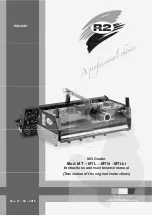
g373614
g378573
Figure 83
Important:
Do not overtighten the filter.
3.
Open the hood; refer to
Opening the Hood (page
.
4.
Add oil to the crankcase; refer to
(page 50)
,
Crankcase Oil Capacity (page 51)
,
and
Checking the Level of the Engine Oil (page
.
5.
Close and latch the hood; refer to
.
Fuel System
Maintenance
DANGER
Under certain conditions, fuel and fuel vapors
are highly flammable and explosive. A fire or
explosion from fuel can burn you and others
and can cause property damage.
•
Fill the fuel tank outdoors, in an open area,
when the engine is off and is cold. Wipe up
any fuel that spills.
•
Do not fill the fuel tank completely full. Add
fuel to the fuel tank until the level is 25 mm
(1 inch) below the top of the tank, not the
filler neck. This empty space in the tank
allows the fuel to expand.
•
Never smoke when handling fuel, and stay
away from an open flame or where fuel
fumes may be ignited by a spark.
•
Store fuel in a clean, safety-approved
container and keep the cap in place.
Draining Water from the
Fuel-Water Separator
Service Interval:
Before each use or daily—Drain
water and contaminants from the
fuel-water separator.
1.
Prepare the machine for maintenance; refer to
Preparing for Maintenance (page 43)
.
2.
Open the hood;
Opening the Hood (page 43)
.
3.
Align a drain pan under the drain valve of the
fuel-water separator (
).
g375850
Figure 84
1.
Drain valve (fuel-water separator)
52
















































